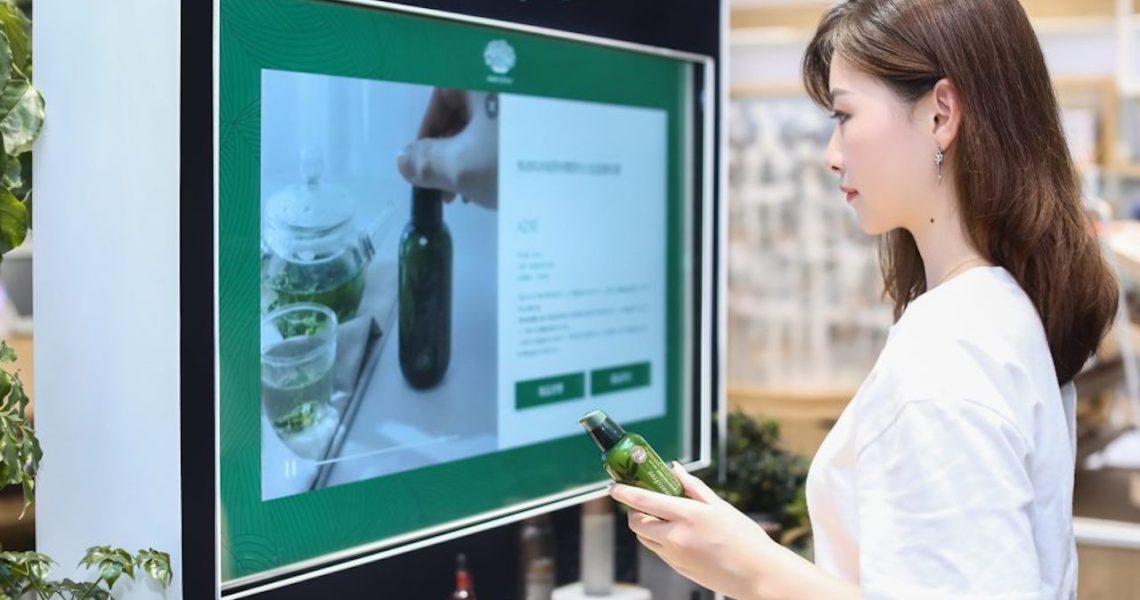One of the most significant impacts of Covid-19 has been the closure of non-essential brick and mortar retail.
Innisfree, the South Korean-based beauty brand, had to close its 10 stores across New York City, Los Angeles and San Francisco in March. As of this week, it reopened its New York City stores, while having to close its Los Angeles stores for a second time due to government mandates. Regardless, Innisfree, which sells through its own stores, e-commerce and retail partners like Sephora, has a robust and multi-pronged approach to store re-openings.
In the latest edition of Glossy+ Talks, an exclusive series for Glossy+ members, Julien Bouzitat, Innisfree vp and head of brand, discusses in-store sanitation protocols, the state of the in-store experience and how technology is coming into play.
Glossy+ members can access the full video of the Talk and Julien Bouzitat’s slides below.
Rethinking the in-store experience
The traditional in-store experience was about discovery and brand immersion, but the current mode is to focus on safety and replenishment. Customers are required to wear masks to enter Innisfree stores, and hand sanitizer is provided at the entrance. The occupancy of customers has also been reduced to 3-10 people, said Bouzitat.
“We have signage that says, ‘Testers are not available. If you want to try, please ask one of our beauty advisors’. If you do ask to see the advisor, they have a set of all the products in the back, and they will go and grab it, and they will demo it on their own hands. They are not touching the customer or putting [products] on their hands.”
“We also have iPads with product pages on the website. Sales associates show all the rich educational content about the products, or show the texture to help the consumer understand the sensorial features of the products.”
“As of now, what we’re seeing are mostly people that know the brand and are coming for replenishment. We have lost the discovery customers that didn’t really know the brand and just want to browse the shelf. The confidence level is not there yet.”
Taking stock of in-store associate roles
Before stores reopened, Innisfree used existing store associates to manage virtual e-commerce consultations. Now, with stores open again, employees are required to have their temperature taken before each shift, as well as wear masks and gloves for the duration.
“We have reduced our operating hours from 12 hours to eight, just to have one shift. In the past, with 12 hours, you would have multiple shifts and people overlapping, but we want to reduce the number of people having to commute and [interacting]. There are now three people per store, and they start and end their shifts together.”
“We sent out a confidential survey to employees regarding their health history, and also asked about their comfort level with returning to work. Based on that, we invited certain people to come back first, because we had to reduce the number of people we had working. And then we have district managers handle scheduling and [have ongoing] conversation about it, as well.”
Investing in in-store technology
Technology has been a cushion for Innisfree as it focuses on elevating the limited in-store experience. With customers unable to try-on products in-store, augmented reality try-on has become essential. Additionally, Innisfree has shifted to cashless payment options to provide a more sanitary checkout experience.
“We had existing AR technology on the website, but now we created in-store signage to invite our consumers to try-on makeup through AR using their cell phones. You scan a QR code, and immediately you’re landing on a web page where you can select the product and start trying on different shades.”
“We’re waiting a bit to see how the situation evolves over the next couple of months before making further investment in AR. But, we’re constantly talking about whether we should make AR a permanent fixture [or station] within stores. Our stores in Korea have virtual magic mirrors and AI.”
“We decided not to offer curbside pick-up because of technology challenges. We’re not capable of allowing order-online, pick-up in-store. Our backend logistics to manage inventory is not capable of linking the two together. We also aren’t sure there’s a big demand.”
Event video
[s3mm type=”video” files=”plustalk-glossy-200715.mp4″ /]
See the slides




















